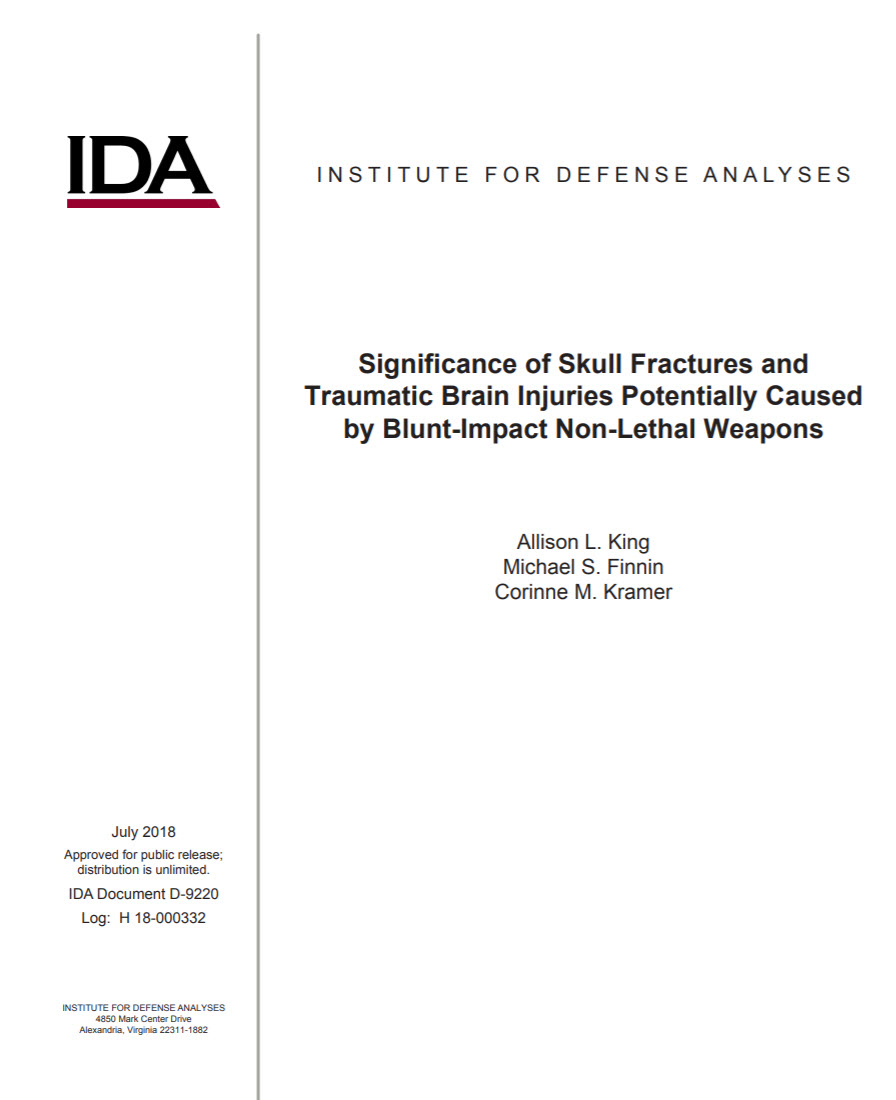Non-lethal weapons (NLWs) are systems designed to immediately and reversibly incapacitate targeted personnel or materiel, while
minimizing fatalities, permanent injuries to personnel, and undesired damage to property. Often employed in crowd dispersal, NLWs serve
as a deterrent by inducing pain or muscle spasm at the site of impact of the affected individual, but they may also induce skull fractures and
traumatic brain injury, which are the focus of this document. As part of the DoD acquisition process, combat developers must compare the
capabilities of NLW systems to requirements to assess technical maturity. One important requirement stipulates the acceptable likelihood
of injury, often quantified as the risk of significant injury (RSI). A NLW’s RSI is a compound metric that estimates the likelihood that the NLW
will cause an injury and the significance of that injury. Computational models could potentially estimate the first part of RSI, the likelihood
that the blunt impact produced by a NLW will cause skull fracture or TBI. This report focuses on the second part of RSI, the significance of
these injuries, which could guide future Joint Non-Lethal Weapons Directorate modeling efforts.

